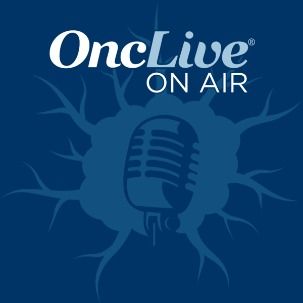Article
TERAVOLT Data Reveal "Unexpectedly High" Mortality in Patients With Thoracic Cancers and COVID-19
Author(s):
Early data from TERAVOLT, a global registry collecting characteristics and outcomes of patients with thoracic cancers affected by COVID-19, suggested an unexpectedly high mortality among this patient population.
Marina Chiara Garassino, MD, a medical consultant in the Medical Oncology Division at Fondazione IRCCS Istituto Nazionale dei Tumori

Marina Chiara Garassino, MD
Early data from TERAVOLT, a global registry collecting characteristics and outcomes of patients with thoracic cancers affected by COVID-19, suggested an unexpectedly high mortality among this patient population, Marina Chiara Garassino, MD, said in a virtual presentation during the 2020 AACR Virtual Annual Meeting I.1
Specifically, among patients with thoracic cancers, a 34.6% death rate (n = 66/191) was reported in this first large data set. Additionally, the most frequent complications observed in patients was pneumonia and pneumonitis in 79.6% (n = 125/157), acute respiratory distress syndrome (ARDS) in 26.8% (n = 42/157), multiorgan failure in 7.6% (n = 12/157), and sepsis in 5.1% (n = 8/157). Notably, the cause of death in the large majority of these patients was attributed to COVID-19 infection—not their cancer.
"Our data suggest an unexpectedly high mortality among patients with thoracic cancers, with a 34.6% death rate. The cause of death in the large majority is attributed to COVID-19 infection and not to cancer; we have checked it case by case," said Garassino, a medical consultant in the Medical Oncology Division at Fondazione IRCCS Istituto Nazionale dei Tumori, in Milan, Italy. "Additionally, no comorbidities were significantly associated with a higher risk of death and no anticancer treatments were associated with higher mortality."
First discovered at the end of 2019 in China, COVID-19 has since rapidly spread throughout the Western world. In March 2020, the World Health Organization (WHO) declared the situation to be a pandemic.2 As of April 28, 2020, WHO reported a total of 2,954,222 confirmed cases and 202,597 total deaths.3 However, according to Garassino, the real numbers of new cases are unknown since potentially half of patients infected with the virus are asymptomatic, and thus, a majority of these patients are not being tested.
Early reports from China have suggested that patients with cancer who are infected with COVID-19 are at an increased risk of death. For example, in 1 study of 1099 patients with COVID-19, 23.7% were also noted to have had comorbidities, such as cardiovascular disease (3.9%), diabetes (7.4%), cancer (0.9%), and chronic obstructive pulmonary disease (1.1%).4
Another study showed that in 1590 patients with COVID-19, there was higher incidence of intensive care unit (ICU) admissions and/or mortality specifically in patients with cancer, which was a prevalence of 1%.5 Lastly, in 1524 patients with cancer, COVID-19 was found in 12 (0.79%) patients; half of them were on active therapy, 7 had non—small cell lung cancer (NSCLC), and 4 patients died.6 These data suggest higher prevalence of the virus in patients with cancer compared with the general population, said Garassino.
Another meta-analysis indicated that the pooled prevalence of the virus in patients with cancer was as high as 2.0% (95% CI, 2.0%-3.0%; I2 = 83.2%).7 A further subgroup analysis based on sample size showed that prevalence was slightly higher, at 3.0% (95% CI, 1.0%-6.0%). Garassino noted that larger studies of more than 100 patients have indicated an overall prevalence of 2.0%.
"We must consider patients with cancer and cancer survivors as an important, vulnerable population for COVID-19 contamination," stressed Garassino. "I think that it's very important to try to identify those patients who are at higher risk of COVID-19. Otherwise, in an attempt to reduce the risk of COVID-19 infection, we can potentially increase the risk of cancer and the cancer mortality."
Patients with thoracic malignancies and COVID-19 are thought to be at particularly high risk given the number of potential risk factors such as older age, smoking habit, pre-existing cardiopulmonary concomitant comorbidities, and intensive therapies administered to treat their illness.1
For this reason, physicians from all over the world have come together to contribute to the TERAVOLT registry. The goals of the consortium are to provide data that inform guidance for oncology professionals on how to best manage patients with thoracic malignancies, and develop a stronger understanding of the risk factors associated with morbidity and mortality from the virus.
"Things are moving very quickly; we are registering about 70 new cases per week from all over the world, and many centers decided to join this registry," said Garassino. "It is very important to also recognize the value of scientific societies because they endorse the project and they spread participation to the registry. As a result, we have now 21 countries in all continents [participating]."
The main inclusion criteria include any patient with a thoracic cancer with a COVID-19 diagnosis that was defined as the presence of the virus with a laboratory-confirmed test via a real-time polymerase chain reaction (PCR) technique. Suspected COVID-19 cases are also included in the registry; these cases are defined as the presence of symptoms and exposure. Symptoms include fever >37.5 degrees C, decrease of oximeter saturation of at least 5%, cough, diarrhea, otitis, dysgeusia, myalgia, arthralgia, conjunctivitis, and rhinorrhea. Investigators also included some radiologically suspected cases with lung imaging features consistent with COVID-19, pneumonia, and other symptoms. Lastly, asymptomatic cases confirmed with a real-time RT-PCR test were also included.
The median age of patients included in this analysis (n = 200) was 68.0 years (range, 62.8-75.0); 29.5% of patients were female. With regard to smoking status, 81.1% were either current or former smokers, while 18.9% were never-smokers. A total of 8.5% of patients had stage I/II disease, 18.0% had stage III disease, and 73.5% had stage IV disease. The majority of the patients had NSCLC (75.5%), 14.5% had small cell lung cancer, 4.0% had thymoma/thymic carcinoma, 4.0% had malignant pleural mesothelioma, and 2.0% had carcinoid/neuroendocrine disease.
The majority of the patients (83.8%) included in the analysis had comorbidities; of these, 30.3% had 1 comorbidity, 26.8% had 2, and 26.8% had ≥3. Only 16.2% of patients had 0 comorbidities.
A total of 73.9% patients were on oncological treatment. "This represents, very well, the kind of patients we see daily in our clinic," noted Garassino. Nineteen percent of these patients were receiving TKI monotherapy, 32.7% were receiving chemotherapy alone, 23.1% of were receiving immunotherapy alone, 13.6% were receiving chemotherapy combined with immunotherapy, and 11.6% were listed as receiving other. The 26.1% of patients who were not receiving current treatment were on follow-up.
The most commonly reported symptoms in these patients were fever of >37.5 degrees C (64.1%), cough (52.0%), dyspnea (53.5%), and fatigue (27.3%). "As you can see, these symptoms overlap with the symptoms of lung cancer," said Garassino, "and as such, the differential diagnosis in these patients is very challenging."
Additionally, 76.0% of patients required hospitalization for their illness. However, only 8.8% of patients were admitted to the ICU. Furthermore, mechanical ventilation was only allowed in 2.5% of patients. "It is possible that these data are conditioned by shortages or from institutional rules," admitted Garassino.
In a univariate analysis, investigators further examined the treatments that patients were taking to determine whether any of the therapies were linked with an increased risk of death or hospitalization. A total of 28.6% of those receiving a TKI alone were hospitalized, compared with 18.2% of those receiving chemotherapy alone, 53.8% of those receiving immunotherapy alone, 33.3% of those receiving chemotherapy/immunotherapy, and 33.3% of those receiving other. Death rates for those in these groups was 26.5%, 28.6%, 47.8%, 33.3%, 26.3%, and 43.8%, respectively. However, none of the treatments were determined to be associated with an increased risk of death or hospitalization. "Results are still few and we are collecting more data to confirm this," said Garassino.
The study is not without limitations. For one, the follow-up is very short and it includes a selected population with the majority of patients on treatment, few surgical cases, and the potential for a reporting bias.
"With a strong, united community, we were able to activate a global registry and provide preliminary data in only 1 month in the absence of dedicated funding," concluded Garassino. "My final thought is that it's important that you don't go this alone, join the registries. We need to work together to get these data available really quickly [to help] our patients."
References
- Garassino MC. TERAVOLT (Thoracic cancERs international coVid 19 cOLlaboraTion): first results of a global collaboration to address the impact of COVID-19 in patients with thoracic malignancies. Presented at: the 2020 AACR Annual Virtual Meeting I; April 27-28, 2020. Session VCTPL09. bit.ly/35bccFq.
- WHO Director-General’s opening remarks at the media briefing on COVID-19 — 11 March 2020. World Health Organization; March 11, 2020. bit.ly/2Sb6oXd. Accessed April 28, 2020.
- Coronavirus disease 2019 (COVID-19) situation report — 91. World Health Organization; April 28, 2020. https://bit.ly/3eYMhoQ. Accessed April 28, 2020.
- Guan W-J, Bi Z-Y, Liang W-H, et al. Clinical characteristics of coronavirus disease 2019 in China [published ahead of print on February 28, 2020]. N Engl J Med. doi: 10.1056/NEJMoa2002032
- Liang W, Guan W, Chen R, et al. Cancer patients in SARS-CoV-2 infection: a nationwide analysis in China. Lancet Oncol. 2020;21(3):335-337. doi:1016/S1470-2045(20)30096-6
- Yu J, Ouyang W, Chua MLK, et al. SARS-CoV-2 transmission in patients with cancer at a tertiary care hospital in Wuhan, China [published ahead of print on March 25, 2020]. JAMA Oncol. doi: 10.1001/jamaoncol.2020.0980
- Desai A, Sachdeva S, Parekh T, et al. COVID-19 and cancer: lessons from a pooled meta-analysis [published ahead of print on April 6, 2020]. JCO Glob Oncol. doi: 10.1200/GO.20.0097









